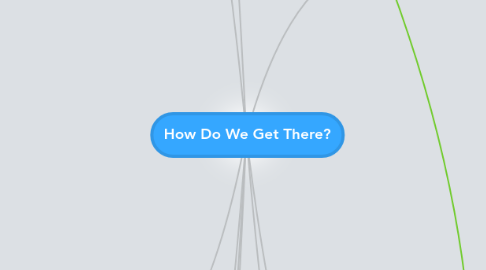
1. Monitoring and Measurement of ICT use in Education
1.1. Resources
1.1.1. Articles
1.1.1.1. http://robertkozma.com/images/ict_ed_ch3_coreindicatorsformonitoringandeval.pdf
1.1.1.2. http://robertkozma.com/images/ict_ed_ch2_monitoringandeval.pdf
1.2. Key Learning Points
1.3. Reflections
1.4. Questions/ Issues
2. Intel Model for developing School-Based ICT Policies and Plans
2.1. Requirements for transformation
2.1.1. Formulate a vision
2.1.1.1. Think differently
2.1.2. Create a systematic 5-year ICT Plan
2.1.2.1. What are your contribution and impact in your school as the School Leader?
2.1.3. Build Alignment
2.1.3.1. Between vision and Programmes
2.1.3.2. Within groups
2.1.3.3. Across groups
2.1.4. Look for levers
2.1.4.1. To create powerful changes
2.1.4.1.1. Teachers' PD
2.1.4.1.2. Curriculum and Assessment change
2.1.5. Provide resources
2.1.6. Team with partners
2.1.7. Implement, Evaluate and Revise
2.2. Intel Policy Development Framework
2.2.1. Envision the Future
2.2.1.1. Create shared vision
2.2.1.1.1. What the school would look like in 5 years' time?
2.2.1.2. Define the government and stakeholders' mission
2.2.1.2.1. Create a combine team to move in the same direction
2.2.1.3. Analyse the Socio-ecosystem
2.2.1.3.1. What is the current situation?
2.2.2. Implement initiatives
2.2.2.1. Team with partners
2.2.2.2. Provide resources
2.2.3. Develop Masterplan
2.2.3.1. Create a long term plan
2.2.3.1.1. 15 years plan for government
2.2.3.2. Look for levers
2.2.3.3. Build multi-stakeholder Alignment
2.2.3.4. Design strategies
2.2.4. Evaluate and Adapt
2.2.4.1. Monitor, adapt and revise
2.2.4.2. Measure success
2.2.4.3. Recommend change
3. Case Study - Jordan
3.1. Strategies for 2011 - 2015
3.1.1. ST1: Blended learning pedagogy for knowledge acquisition
3.1.1.1. Use Knowlegde ladder to think strategically to plan to move towards your vision
3.1.1.2. Simple application of technology
3.1.2. ST2: School based management for knowledge acquisition
3.1.2.1. Trs have more information on students
3.1.3. ST3: Lead school innovation for knowledge deepening
3.1.3.1. Eg sch of the future with innovative ideas
3.1.3.2. Similar to FutureSchools in Singapore
3.1.4. ST4: Assess knowledge economy skills for knowledge deepening
3.2. King's vision of Jordan's future
3.2.1. Knowledge Economy
3.2.1.1. What would that look like in their schools?
3.2.1.1.1. Knowledge Economy Education
3.2.2. Using ICT as a lever
3.3. Current Status
3.3.1. Basic Education moving towards Knowledge Acquisition
3.4. Implementing Initiatives
3.4.1. Teaming with partners
3.4.2. Providing resources
3.4.2.1. Allocate resources in strategic ways
3.4.3. Structure
3.5. Evaluation
3.5.1. Progressive targets and goals
3.5.2. Evidences and assessment are needed
3.5.2.1. downloading of lessons
3.5.2.2. Lesson observations
4. What are the current status in your school?
5. Singapore's Progress in this Journey
5.1. School Leaders created a shared vision
5.1.1. Creating a local language around the vision that is embedded in daily discussions on teaching and learning
5.2. Creating structures
5.2.1. Role modeling
5.2.2. Committees that meet regularly for innovative teaching strategies
5.3. Providing resources for teachers
5.3.1. Generate energy within the school
5.4. Autonomy
5.4.1. Teachers providing the ideas
5.5. Degree of SDL and CoL in Schools
5.5.1. Teachers create structures to develop SDL and CoL in their classrooms
5.5.2. Deeper understanding by schools compared to 5 years ago
5.5.3. Significant conversations on SDL and CoL
6. General Intelligence
7. Knowledge Ladder
7.1. Resources
7.1.1. articles
7.1.1.1. ICT Education Reform and Economic Growth
7.1.2. URLs
7.2. Key Learning Points
7.2.1. Each model has different implications for
7.2.1.1. Policy Goals
7.2.1.2. Teaching and Learning
7.2.1.2.1. KD
7.2.1.2.2. KC
7.2.1.3. Curriculum and Assessment
7.2.1.3.1. KD
7.2.1.3.2. KC
7.2.1.4. Social Structure
7.2.1.4.1. KD
7.2.1.4.2. KC
7.2.1.5. ICT Use
7.2.1.5.1. KD
7.2.1.5.2. KC
7.3. Reflections
7.4. Questions/ Issues
8. How Can Technology Impact Classroom Practice and Deepen Learning
8.1. Resources
8.1.1. Articles
8.1.1.1. Qualitative Case Studies of Innovative Pedagogical Practices Using ICT
8.1.1.2. Technology and Classroom Practices: An International Study
8.1.2. URLs
8.2. Key Learning Points
8.2.1. Key Role of School Leaders
8.2.1.1. Cultural change
8.2.1.1.1. Support Innovation
8.2.1.2. Autonomy of teachers
